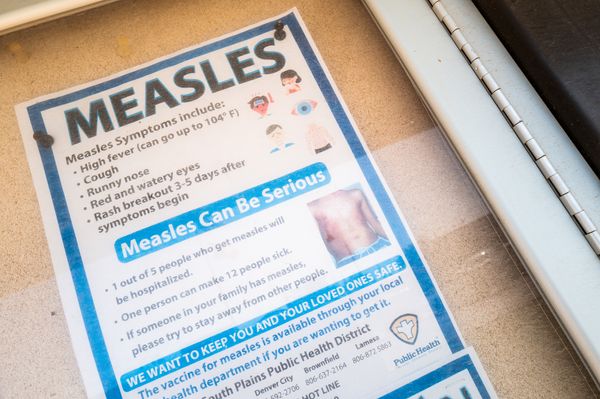
If you’re a parent or caregiver working or looking for work, you might benefit from a special tax break to offset the costs of care for your dependent.
The federal child and dependent care tax credit (CDCTC) is a nonrefundable credit designed to help recover expenses associated with caring for a child under age 13 or a dependent with disabilities.
You won’t receive the credit back as a refund even if the amount exceeds your tax liability. How much you get depends on how many dependents you have, your income, and the amount of eligible expenses you are claiming.
Here’s what you need to know about who qualifies and what you can claim under the child and dependent care tax credit.
What is the child and dependent care credit?
The child and dependent care tax credit is a non-refundable tax break designed to help parents or caregivers reclaim some of the expenses related to caring for a qualifying child or loved one with a disability.
The credit amount is based on your income and a percentage of the expenses you’ve paid for the care of a qualifying child or dependent to help you go to work, look for work, or attend school.
One key note to remember is that you can only claim the CDCTC for qualifying expenses related to the care of a child or a dependent.
By contrast, the federal child tax credit (CTC) is a different tax break that can be used to pay for more than your children’s childcare. Parents have also used the CTC to pay for other essentials such as food, education expenses, shelter, utilities, clothing, and debts
Who qualifies for the child and dependent care credit?
To qualify for the child and dependent care tax credit, your child or dependent must live with you for more than half of the year and:
- Be a child under the age of 13
- Is a spouse or dependent of any age who is physically or mentally incapable of self-care
To claim the child and dependent care credit you must have met the following requisites:
- You paid expenses for the care of a qualifying individual to enable you (and your spouse, if filing jointly) to work or actively look or work
- You (or your spouse, if filing jointly) lived in the United States for more than half the year. (Note: special rules apply to military personnel stationed outside of the U.S.)
- You (and your spouse) must have earned income from a job
Some exceptions: If one spouse is a full-time student or cannot work due to a disability, you can still claim the credit.
If you’re not sure if you may be eligible for the credit, you can check if you qualify using the IRS tool on IRS.gov. You’ll just need the date of birth for the child or dependent you are claiming and your filing status if you are married.
Limits on who can provide the care:
There are some limitations on the CDCTC based on who is providing the care. For instance, you can’t claim the credit if you paid:
- Your spouse
- A parent of the child being cared for
- A dependent on your tax return
- Your child age 18 or younger, regardless if they are claimed as a dependent on your tax return
Child and dependent care income limit
The child and dependent care tax credit amount depends on your income and the percentage of eligible care expenses, also known as work-related expenses.
Qualifying expenses range from 20% to 35%, and your percentage depends on your adjusted gross income (AGI). The maximum amount of qualified expenses for the credit in 2024 is:
- $3,000 for one qualifying person
- $6,000 for two or more qualifying persons
One factor to keep in mind: the child and dependent care tax credit is not adjusted annually for inflation. However, the federal child tax credit is indexed for inflation and the IRS announced the new 2025 child tax credit amount.
Source: Internal Revenue Service
So how do you calculate your child and dependent tax credit amount? Multiply the maximum allowable expenses (determined by the number of qualifying persons you are claiming) by the percentage that corresponds to your AGI.
For instance, if you have one qualifying dependent, and your AGI is under $15,000, the most your credit could be worth is $1,050. That’s 35% of the highest percentage allowable of $3,000 based on that one dependent.
Now, say you have multiple qualifying dependents and your adjusted gross income is $38,0000. In that case, the highest value of your credit is $1,380. That’s 23% of the maximum allowable credit of $6,000 based on multiple dependents.
Eligible child and dependent care expenses
Whether you are paying for a daycare, a nurse, or daily care expenses for a child or dependent, the child and dependent care tax credit will only cover qualified work-related expenses.
A work-related expense is the amount you or your spouse (if married and filing jointly) pay for the care of a qualifying person to allow you to work, or search for work.
Work-related expenses that qualify may be at your home or outside your home and include, but are not limited to:
- Nanny-share arrangements or daycare
- Preschool, nursery school, or similar programs below the level of kindergarten
- Day camp (Note: An overnight camp will not qualify as a work-related expense)
- Transportation via bus, subway, taxi, or private care (If a care provider takes a qualifying person for their care)
According to IRS Publication 503, you can also claim fees and deposits paid to an agency of a care provider, some medical expenses, and meals and lodging provided for a housekeeper.
How to claim the child and dependent tax credit on your return
You can claim the child and dependent tax credit by filing an IRS Form 1040, 1040-SR, or 1040-NR, and attaching a Form 2441 on your tax return. You must enter the credit on your Schedule 3 (Form 1040), line 2.
To be prepared at tax time, you should keep a record of your work-related expenses or any dependent care benefits received by an employer.
Additionally, if you have a household employee (someone that you pay regularly to come to your home and care for your child, dependent, or spouse) you will likely have to file a Schedule H (Form 1040), with your tax return and pay household employment taxes. You’ll also need an employer identification number (EIN).
However, if the individuals who come to your home to work are self-employed, they won’t be considered household employees and you won’t have to pay any employment taxes.
Does your state have a child and dependent care tax credit?
Separately, some states offer their own version of the child and dependent care tax credit.
As of 2024, 27 states and the District of Columbia provide a CDCTC, with varying rules on refunds. For more information, visit your state’s Department of Revenue website.
Will the child and dependent care amount change in 2025?
The child and dependent care tax credit has not made any significant changes in over two decades, however, some advocates argue it should be adjusted for inflation like the child tax credit.
According to the Bipartisan Policy Center, the child and dependent care tax credit’s purchasing power is much smaller today than it was in 2001 when it was last expanded. As it stands, families within the lowest income threshold can claim at most $1,050 against the $3,000 maximum qualified expenses.
According to their estimates, if expenses had been indexed for inflation over the past 22 years, the maximum qualified expenses would be valued at $5,300 (with the maximum credit possible increasing to $1,850 for one child).
Advocates suggest indexing the credit for inflation and making it fully refundable to better assist families with lower incomes. Others have suggested phasing out the credit for families with higher incomes.
Could you get a larger child and dependent tax credit amount in 2025?
As for 2025, economists and advocates for the child and dependent care tax credit are hopeful that the upcoming tax cliff can spark debate about the future of this credit.
The Tax Cuts and Jobs Act (TCJA) expires at the end of 2025, which gives Congress ample room to make reforms on largely debated policies surrounding affordable childcare.
During the 2024 presidential campaign, President-elect Donald Trump’s chosen Vice President JD Vance suggested expanding the child tax credit amount in 2025. (However there is no guarantee the incoming administration will pursue that proposal.) With the cost of affordable child and dependent care at the top of mind for many, the child and dependent care tax credit may, too, get some attention next year.







